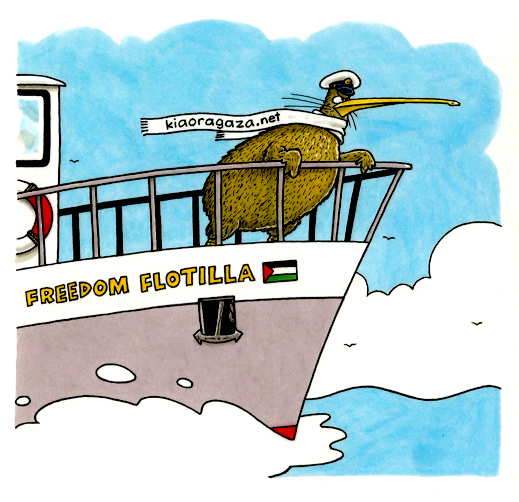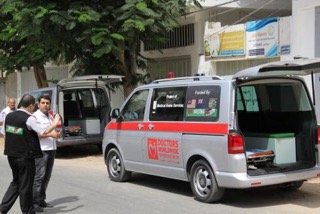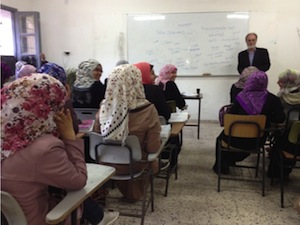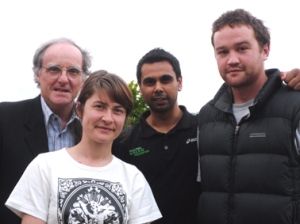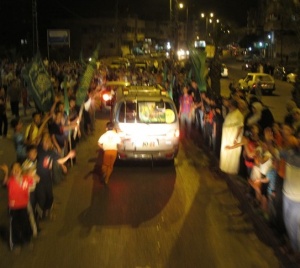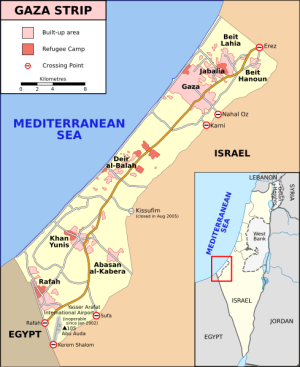
The Palestinian village of Jubbet al-Dhib is only one example of Israeli institutional discrimination
by Chris Keeler
7 March 2011
The discrimination of the Israeli state, through its illegal occupation of Palestine, towards Palestinians is well documented and, unfortunately, immense. Discriminatory allocation of water, confiscation of private and public land, unlawful restriction of movement as well as unequal zoning and planning policies (not to mention repetitive and often unpunished acts of settler terrorism) target the Palestinian population in a way that contradicts international, and often Israeli, law. Despite these breaches of law, Israel has been able to dominate the Palestinian people, denying them the most basic of services while providing large subsidy packages to Israeli settlements. Consequently, there is an unacceptable, state-authorized discrepancy between the quality of life in Palestinian villages and Israeli settlements. While there are myriad examples of this discrepancy, the case of the Palestinian village of Jubbet al-Dhib and the nearby settlements of Teqoa, Sde Bar and Nokdim (where Israeli Foreign Minister Avigdor Lieberman resides) is a striking case of discrimination by the Israeli government.
Jubbet al-Dhib is located in Area C, designated as such by the Oslo Accords, and is therefore under complete Israeli control. The Palestinian village has a population of around 160 people while Sde Bar maintains a modest settler population of 50. Despite the geographic and demographic similarities between the two villages, Sde Bar is far more developed that the Palestinian town. Sde Bar was established in 1997 while Jubbet al-Dhib dates to 1929. The Palestinian village lacks a school and is not connected to the electricity grid despite requesting connection since 1988. The village has requested connection to the electrical grid six times since 2000 and has been denied each time. Israeli reasoning is that the village lacks a ‘master plan,’ although Jubbet al-Dhib has submitted numerous ‘master plans,’ most recently in August 2009 when it was once again denied. The village was only connected to a water network in 2004. The village also lacks a sewage system, thanks to Israeli rejection of plans to build one. 92.3% of the village uses cesspits as the major means of discarding waste.
Israel has also rejected a plan to build a local school for the village and a request to pave the road connecting the village to the main road. As the village also lacks a medical clinic (Israel has rejected plans to build one) inhabitants of Jubbet al-Dhib are forced to walk the 1.5 kilometer dirt road in order to reach the main road. The state of the dirt road is so decrepit that vehicles are unable to access the village. This causes a major problem during medical emergencies. Such an emergency occurred in 2009 when a local villager suffered a heart attack and had to be carried to a nearby village to see a doctor. The lack of schools in Jubbet al-Dhib (there is a kindergarten that is run in the house of one resident) force the children of the school to walk for 45 minutes to reach school. In winter, the dirt road becomes muddied and too difficult to traverse, forcing many children to miss school. The consequences of such a lack of education are clear. In the village, 11.6% of the population is illiterate. Of the literate population, only 7.1% can read and write and only 38.1% has completed primary education (2.4% have gone to university.)
The settlement of Sde Bar, as noted above, was established 68 years after Jubbet al-Dhib. Yet the Israeli settlement has schools, paved roads, a medical clinic and is connected to both electrical and water networks. The settlement receives substantial funding from both the Israeli state as well as numerous American tax-exempt organizations, such as Christian Friends of Israeli Communities (Palestinians from Jubbet al-Dhib are prohibited from attending educational programs set up by Israel and foreign donors in Sde Bar.)
The following passage is taken from Separate and Unequal, the latest publication from Human Rights Watch:
Jubbet al-Dhib is a 160-person Palestinian village to the southeast of Bethlehem that is often accessible only by foot because its only connection to a paved road is a rough, 1.5 kilometer-long dirt track. Children from Jubbet al-Dhib must walk to schools in other villages several kilometers away because their own village has no school. Jubbet al-Dhib lacks electricity despite numerous requests to be connected to the Israeli electric grid, which Israeli authorities have rejected; Israeli authorities also rejected an internationally donor-funded project that would have provided the village with solar-powered streetlights. Any meat or milk in the village must be eaten the same day due to lack of refrigeration; residents often resort to eating preserved foods instead. Villagers depend for light on candles, kerosene lanterns, and, when they can afford to fill it with gasoline, a small generator.
Approximately 350 meters away is the Jewish community of Sde Bar. It has a paved access road for its population of around 50 people and is connected to Jerusalem by a new, multi-million dollar highway—the “Lieberman Road”—which bypasses Palestinian cities, towns, and villages like Jubbet al-Dhib. Sde Bar operates a high school, but Jubbet al-Dhib students are ineligible to attend; for Palestinians, settlements are closed military areas that may be entered only with special military permits. Residents of Sde Bar have the amenities common to any Israeli town, such as refrigerators and electric lights, which Jubbet al-Dhib villagers can see from their homes at night.
Both Jubbet al-Dhib and Sde Bar fall within “Area C” – land that was designated under the 1995 Oslo interim peace agreement to fall under Israeli civil and military control. But while Israel grants Sde Bar residents access to roads, electricity, and funds for housing development, it deprives residents of Jubbet al-Dhib of similar amenities. Since Sde Bar’s founding in 1997, Israel has invested millions of dollars in nearby Jewish settlements like Tekoa and Nokdim to build homes, schools, community centers, health clinics, and swimming pools. The same is not true for Jubbet al-Dhib, which dates to 1929. Development and infrastructure there are at a standstill, strictly prohibited by Israeli authorities who prevent villagers from building new houses or expanding those they already have.
Unfortunately, Jubbet al-Dhib is only one example of the Israeli state unjustly and illegally discriminating against entire Palestinian villages. Throughout Area C – particularly in the Jordan Vally, which is 95% off-limits to Palestinians – similar examples can be found. The village of Fasayel is surrounded by five Israeli settlements, Ka’abneh by three, and Ein il-Hilwe by three, to name a few. Fasayel, Ka’abneh and Ein il Hilwe all face the same systematic discrimination by the Israel as Jubbet al-Dhib. This state-sponsored policy of discrimination is not only illegal under international law, but also acts as a policy of forced transfer of the native population (five families have been forced to leave Jubbet sl-Dhib in the last five years while the entire population of the Jordan Valley has decreased by 82.5% from 350,000 in 1967 to a little more than 56,000 today.)
Palestinians who have lived in the same villages for generations are being forced off their land by this practice of discrimination. Indeed, while the United States and the Palestinian Authority continue to place emphasis on restricting the growth of Israeli settlements (contrary to Israeli claims 20% of settlement growth in 2006 and 37% in 2007 are the result of immigration from Israel proper, not ‘natural growth’) more attention must be given to the Israeli policies that limit and prohibit the development of Palestinian villages while encouraging further growth (and the accompanying land confiscation) of Israeli settlements. The juxtaposition of Palestinians villages and Israeli settlements is a frightening revelation of the true damage of the Israeli occupation.
The author is currently living in the West Bank and working at a community development NGO.


